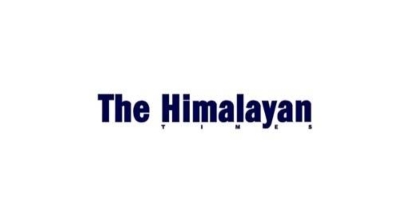Koshi floods
A B Thapa
The threat of Koshi floods is one of the key national problems at present, posing a scientific and technological challenge to tame it for the benefit of not just Nepal but the entire South Asian region. The Kosi river system thus is both an opportunity and a challenge. If the river system is not tamed for flood control and irrigation benefits, the Kosi could wash away tens of thousands of Nepalis and many more rendered homeless in Nepal and India.
Nepal could be blessed with fabulous opportunities for national development if institutions like the Royal Nepal Academy of Science and Technology (RONAST), which is soon to organise a national conference to discuss burning national problems related to science and technology, work together to resolve the Kosi problem in the best interest of the country. In 1997, Water Energy Commission (WECS), virtually without any reasonable access to the outside scientific information, convinced India to agree on the Nepali version of the Kosi development perspective. This resulted in a bilateral study agreement.
The agreement includes a navigation canal right from Chatara to the Ganges to develop inland waterway linking Nepal with the seaport at par with the Rhine and other waterways in Europe and North America. It is hoped that RONAST’s conference would produce recommendations on environment, irrigation development, energy and river navigation benefits of the Kosi river.
The Kosi river, known as the river of sorrow of India’s Bihar state, shifted from east to west to over 12O km in the last 200 years. In the past, about 8000 sq. km. of lands have been laid waste as a result of the sand deposit. In course of shifting, many towns and villages were wiped out, and heavy losses of property, cattle and human lives were inflicted.
Fortunately the embankments built few decades ago temporarily helped check the lateral shifting of the Kosi. However, the detention basin upstream of the barrage at Hanumannagar is almost full of sediments at present. Soon the embankments would be ineffective in controlling the Kosi floods.
The river is on the verge of shifting further to the east, posing an unprecedented threat to human settlement and development infrastructure in Nepal and India. Few appear to be concerned. All the past and present studies and very recent observations indicate that the Kosi is quickly turning into a hanging river. The unprecedented flood disaster is unlikely to be just a one time event.
Like the Yellow River flood disaster in China in the past, the ferocious floods of the Kosi would be frequently hitting eastern Nepal and India’s nothern Bihar state, leaving behind farm lands with sand blankets. The Yellow River has now been regulated by building large storage dams, which according to the China Daily, have helped save flood damages of US $ 50 billions.
Large dams in the drainage area with big storage volume is the only lasting solution to the Kosi flood problem. This has been the opinion of renowned experts and scientists involved in the Kosi study in the past. We can draw lesson from the Chinese experience as well. It can be concluded that there is no substitute for the large storage dams to control the Kosi floods.
Unfortunately, some people in Nepal and India have misgivings about the Kosi dams.
Such misgivings are unfounded and they are often the result of present global disenchantment with the high dams particularly for the generation of hydroelectricity. In case of the Kosi dams, this type of notion is completely misplaced. The life and property of too many peoples in Nepal and India are at great risk if the Kosi dams are not built in time. Those who have in their mind other ideas should come forward to offer alternatives.
The Sun-Kosi High Dam has to be built first because the Kosi High Dam and the Sun-Kosi High Dam would be mutually exclusive if the Kosi High Dam is built first. Moreover, it should be built as soon as possible to preclude the constantly growing threat from the Kosi floods. It is not a very big project compared to the Kosi High Dam. Nepal alone could implement this project with financial and technical assistance from India and other donors.
The study to implement the Kosi High Dam Project is tied up with the provision of a 165 km long navigation canal, out of which 120 km stretch would be in the Indian territory. The Kosi navigation canal would directly link Nepal through the Ganges, Bhagirathi and Hooghly with the Calcutta seaport. It could thus be possible to develop waterway providing direct seaport outlet for landlocked Nepal.
Nepal could itself implement the dam and hydropower component of the Kosi High Dam Project under the technical and financial assistance of India and other donor agencies. Nepal could even follow the model of the Columbia River Treaty signed between the United States and Canada under which Washington provided advance credit to build the Columbia River projects, and the credit was paid back from the sale of electricity. According to one estimate presented to a WECS meeting, Nepal could expect to earn about US$ 0.75 billion annually soon after the completion of the project and about US$ 1.5 billion after repayment of loan within 12 years at the current price.
Thapa was associated with Water Engergy Commission





